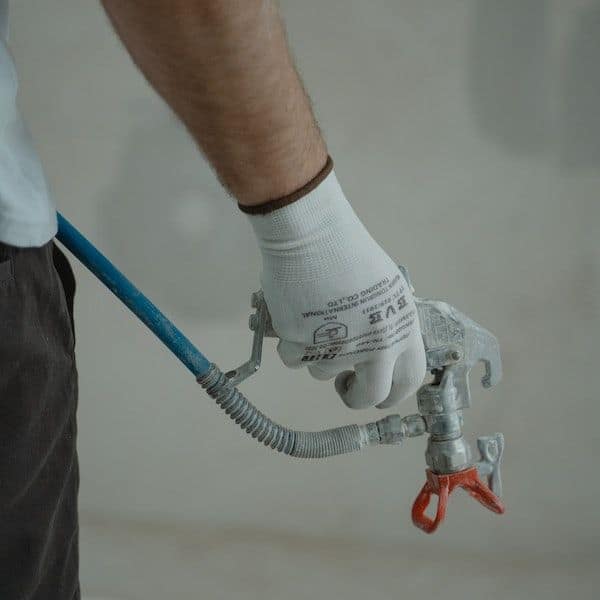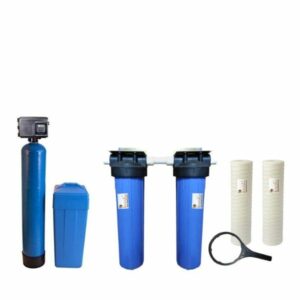Introduction to Whole House Water Filter
Whole house water filters are an invaluable addition to any home. They provide an extra layer of protection for your family against contaminants that could be present in your water supply. They are also incredibly convenient, as they filter all the water from every faucet in your house at once.
There are many whole house water filter types and each filter can be used to remove sediment, chemicals, and other impurities so that you get the safest and cleanest water possible for drinking and bathing for yourself and your family.
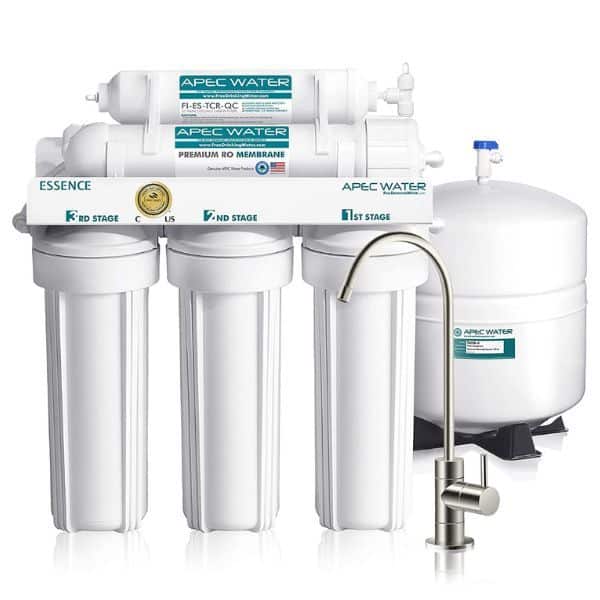
Installing a Whole House Water Filter – A Step-By-Step Guide
Installing a water filter is a relatively straightforward process that you can do in a few hours.
Required Parts:
- Water filter
- Shut-off valves
- Tubing
- fittings
- Bypass valves (if required)
Required Tools:
- Screwdriver
- Pliers
- Pipe cutters
- Pipe wrenches
- Plumber’s tape
- Teflon tape
Instructions:
Decide The Location
Before you start, you’ll need to determine the best location for your filter system. Ideally, this should be somewhere near where the main water line enters your house – like near the hot water heater or outside in a garage or utility area.
Turn Off The Water Supply
Start by turning off the water supply to your home. You can do this by shutting off the main water valve or shut-off the valve near your water meter. This will ensure that no water is flowing through the pipes while you install the filter.
Cut The Pipe
Cut the pipe that is connecting your water supply to the house with a pipe cutter, making sure that it is long enough for your filter to fit onto it. If needed, use a hacksaw to get a clean cut.
Attach Shut-off Valves
Attach shut-off valves on either side of the cut pipe. These will allow you to turn off the water flow when needed during the installation or maintenance of the filter.
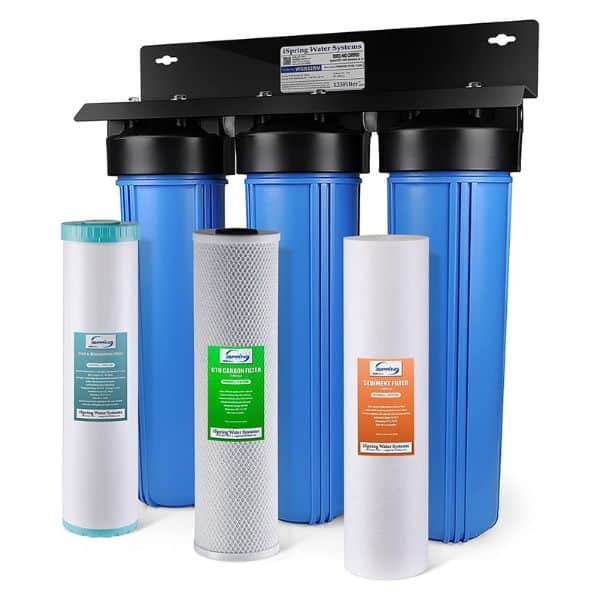
Place Your Whole House Water Filter Vertically
Place your whole house water filter vertically in its designated place, making sure that it is level.
Connect The Tubing
Connect the tubing to both ends of the filter and then attach them to the shut-off valves. Securely tighten them with a wrench to ensure there are no leaks. It is important to install water filter after water softener.
Connect The Bypass Valves
Connect the bypass valves if you purchased one, and follow the same steps as above to attach them securely.
Turn On The Main Water Supply
Finally, turn on the main water supply to your home and check for any leaks from the filter or fittings. If all is good, you’re done!
Congratulations! You have successfully installed your whole house water filter and can now enjoy cleaner, better-tasting water. Remember to check the filter regularly and change it as needed according to manufacturer recommendations. With regular maintenance, you’ll be able to continue enjoying safe and clean water for many years ahead.
Safety Instructions
To ensure your safety when installing a whole house water filter, keep the following tips in mind:
- Be sure to turn off the main water supply before installation.
- Wear protective gear such as gloves and eye protection.
- Make sure all connections are secure and tight.
- If you’re unsure about any part of the installation, it’s best to get professional help.
By following these tips and steps, you can rest assured that your whole house water filter installation will be successful and provide you with clean, safe water for years to come.
DIY Vs Professional Installation
Installing a whole-house water filter is a great way to improve your home’s water quality and save you money on bottled water or fancy filtration systems. The question is, should you install one yourself or hire a professional? Installing one yourself might seem like the obvious answer – after all, who doesn’t want to save some money?
However, it is important to recognize that installing a whole-house filter requires knowledge of both water systems and electricity in order to ensure it is done right. A poorly installed filter can cause significant damage to not only your plumbing but also potentially create safety hazards.
That being said, if you are confident in your home maintenance skills, investing in some quality DIY supplies and taking the time to research proper installation techniques can make for an effective filter with little risk. If you’re feeling less confident, however, professional installation directly from the manufacturer may be worth its weight in gold for peace of mind and optimal performance.

6 Types Of Whole House Water Filter Systems
Whole house water filter systems are an important part of protecting your home and family from any unseen contaminants or pollutants in drinking and bathing water. There are several types of water filters to consider for whole house use, including:
- Activated carbon filters
- Sediment filters
- Ultraviolet purifiers
- Reverse osmosis systems
- Distillation systems
Activated Carbon Filters
Activated carbon filters are amazing devices that clean air and water by a process called adsorption. Adsorption is when particles become attached to the surface of the activated carbon filter – this process can remove 99% of water-soluble organic compounds, chlorine, bad taste, and unpleasant odors from liquids. The most common use for activated carbon filters is for water purification. They reduce heavy metals, bacteria, parasites, microplastics, and more from our taps – making water safe for us to consume as well as keeping away nasty smells and flavors.
Sediment Filters
Often used in tandem with a water softener, sediment filters remove contaminants and minerals from your water to help prevent clogs and improve the taste of all your household drinks. Most recent advancements in technology have enabled a wide range of filter sizes and designs to accommodate various types of plumbing setups.
Depending on where you live, there may also be laws dictating the type of filter that needs to be used. So it’s always best to check the regulations in your area before selecting a sediment filter for your needs.
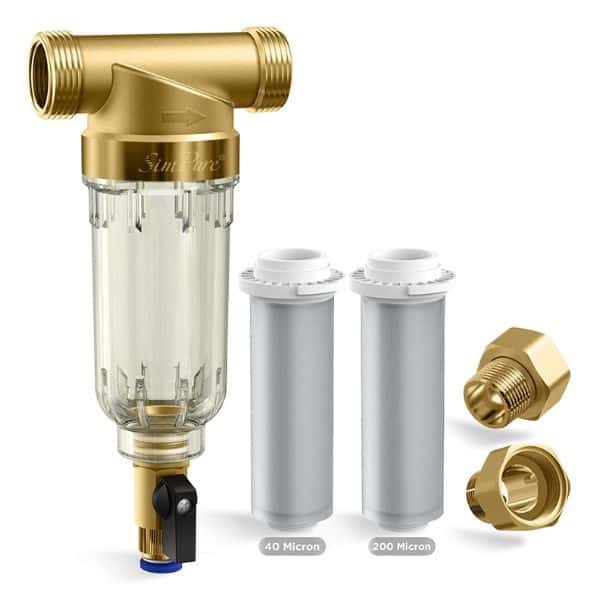
Ultraviolet Purifiers
Ultraviolet is the best water filter for whole house. These purifiers are gaining in popularity among homeowners and businesses alike. They provide a powerful and effective way of killing harmful bacteria and other microorganisms while also improving the quality of the air we breathe. These purifiers use ultraviolet light to kill airborne bacteria, viruses, mold spores, and other contaminants by disrupting their DNA structure and rendering them inactive or harmless.
Furthermore, UV purifiers don’t require filters which means they have an infinite lifespan so long as the bulbs are changed every certain amount of time. Additionally, when used in conjunction with a good ventilation system, they can help reduce energy costs due to improved air circulation and filtration capabilities.
Reverse Osmosis Systems
Reverse osmosis systems can be a great addition to your home. With advances in technology, you can now get simple, efficient, and affordable systems that clean your water for you. When the system is installed properly, it can provide crystal-clear water that passes all safety testing standards.
Not only does it remove unwanted particles in the water, but it also removes chemicals like fluoride and chloride. This can be beneficial for anyone who happens to have sensitive skin or any other allergies that may be triggered by impure water.
Distillation Systems
Distillation systems are an invaluable tool used to separate and purify liquids. Distillation works by heating a liquid until it vaporizes, then allowing the vapor to cool and condense back into a pure form free from any undesired elements. This process continues in order to obtain maximum efficiency from a set separations goal.
Whichever water filter system you use, make sure to properly install and maintain it according to the manufacturer’s specifications in order to ensure its effectiveness. Regular replacement of the filter cartridges will also help keep your system running smoothly and efficiently.
The Bottom Line
Installing a whole house water filter is one of the best investments you can make for your family’s health and safety. By following the above installing instructions, you can ensure that your whole house will be equipped with clean and safe drinking water.
Before installation, make sure to check the local regulations regarding water filtration systems, as well as the manufacturer’s recommendations for the system you choose. Be sure to purchase any necessary parts and supplies before beginning the process of installation.
